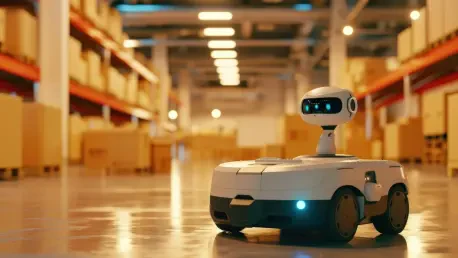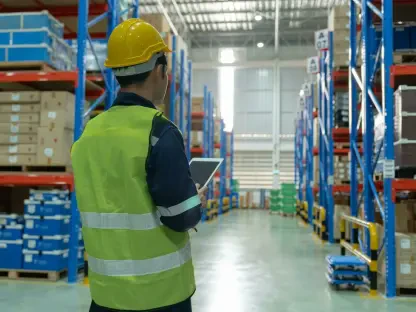The robotics automation industry stands at the forefront of revolutionizing logistics operations, driven by advancing technology and increasing demand for efficient systems. Currently valued in billions, the industry encompasses key segments such as humanoid robots, autonomous guided vehicles (AGVs), and integrated operating systems, playing a pivotal role in shaping the modern warehousing landscape. The dominance of market players like SY Holdings is propelled by strategic alliances and innovations that harness emerging technologies to address labor shortages and ergonomic safety concerns. These advancements are underscored by regulatory influences such as OSHA’s safety mandates, which necessitate adaptive automation solutions to meet stringent compliance standards.
Key Market Trends and Projections
Industry Trends
Modern robotics automation is shaped by transformative trends aimed at addressing operational efficiencies and workforce challenges. Notably, the labor crisis in warehousing—where staffing gaps reached 18%—coupled with increasing ergonomic injury claims, underlines the urgent need for robust human-robot collaboration solutions. SY Holdings, in particular, capitalizes on this necessity through its partnership with Standard Robots, offering humanoid-AGV hybrid solutions designed to enhance logistics operations. Furthermore, the industry’s shift toward AI-powered robotics paves the way for unprecedented opportunities, enabling humanoid units to execute complex tasks such as pallet stacking and inventory audits while ensuring regulatory compliance.
Growth Projections
With U.S. logistics robotics demand projected to surge from $3.1 billion to $12 billion by 2034, the industry is poised for substantial growth. Market data indicates that SY Holdings is well-positioned to capture a significant share, driven by its focus on systems integration which offers high-margin services distinct from hardware-only providers. The partnership with Standard Robots has already provided early access to pivotal advancements in robotics automation, solidifying SY Holdings’ lead in a competitive landscape. Projections suggest exponential growth in revenues as the company leverages its diversified approach encompassing hardware, software, and services within its logistics robotics division.
Challenges and Barriers
Despite promising growth trajectories, the robotics automation industry faces significant hurdles, ranging from technological to regulatory barriers. Technological challenges include ensuring seamless integration between human operators and robotic systems, necessitating sophisticated operating solutions like SY Holdings’ Zion Systems Group. Additionally, regulatory pressures related to safety compliance pose substantial obstacles, particularly with OSHA implementing revised rules demanding enhanced safety measures in automation practices. Addressing these barriers involves developing adaptive solutions and fostering collaborations that mitigate risks while optimizing operational efficiency, ensuring the industry’s continued evolution in the face of challenges.
Regulatory Landscape
Navigating the complex regulatory landscape is imperative for success in robotics automation. The introduction of significant laws and standards establishes compliance requirements that shape industry practices, highlighting the importance of security measures across logistics operations. OSHA’s upcoming compliance rules exert considerable influence, requiring companies like SY Holdings to adopt innovative approaches that satisfy stringent safety criteria. Furthermore, interoperability standards must be considered to facilitate seamless collaboration between human workers and robotic systems, underscoring the vital role of compliance in driving industry progress and fostering competitiveness.
Future Directions
The future of robotics automation is replete with opportunities shaped by emerging technologies and evolving market dynamics. Innovations such as the integration of AI-powered mobility into warehouse management systems exemplify the direction in which the industry is headed, promising enhanced flexibility and safety compliance. The impending commercial launch of Digit 2.0 heralds a new era of collaboration between humans and robots, offering versatile solutions for logistics challenges. Moreover, global economic conditions and regulatory changes will significantly impact how industry players navigate market disruptions, providing insights into potential growth areas and investments critical to the industry’s evolution.
Conclusion
SY Holdings has emerged as a transformative force within the robotics automation market, leveraging strategic partnerships and innovative approaches to redefine logistics operations. Its unique position as an integrator in the logistics ecosystem creates a compelling case for investors poised to capitalize on substantial returns. As the industry continues its evolution, SY Holdings offers a rare opportunity for those seeking to engage in the future of logistics robotics innovation, demonstrating a potential for notable growth and significant impact on the supply chain landscape.









